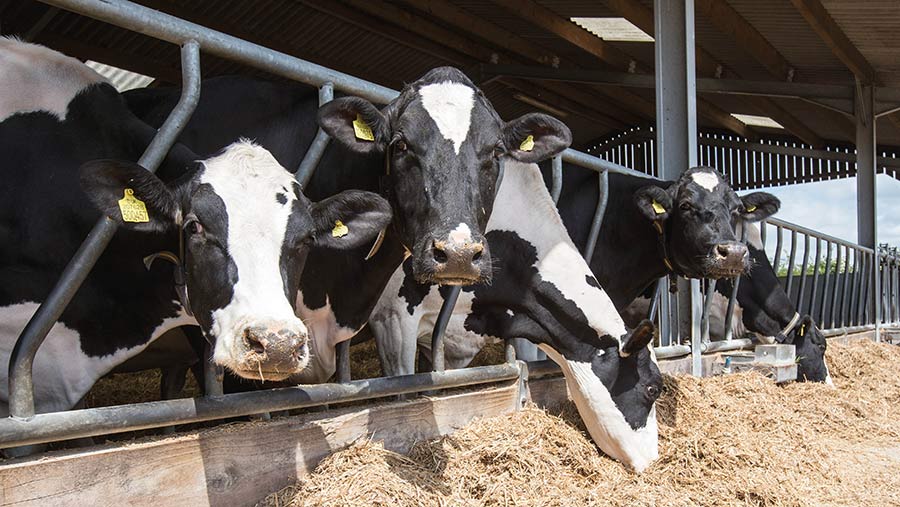Ketosis in dairy cows: Cause, symptoms and prevention
 © Tim Scrivener
© Tim Scrivener Ketosis is a metabolic disorder affecting dairy cows in early lactation. It happens when they enter negative energy balance caused by the dramatic increase in energy demand for milk production.
Good transition management will ensure optimum rumen function and dry matter (DM) intake through the dry period into early lactation.
This will minimise the energy deficit and the degree of fat mobilisation.
However, if feed intake is low, cows will have to break down excessive amounts of body fat to meet the demand.
See also: How farmers and advisers are failing transition cows
About the author

Vet Ed Noblett graduated from Liverpool University in 2018, before joining Bishopton Veterinary Group to focus on Farm Animal Veterinary. Ed has a key interest in dairy cow nutrition and transition period management.
What causes ketosis?
Body fats cannot be converted in the same way as dietary sources of energy. They are broken down to non-esterified fatty acids (Nefas), which the liver converts to ketone bodies such as beta-hydroxybutyrate (BHB).
In small quantities these ketones can be used as an energy source, but during a significant negative energy balance the ketone levels in the bloodstream are excessive and cannot be utilised, leading to ketosis.
What are the symptoms?
Symptoms of clinical ketosis are a reduced appetite and poor rumen fill, weight loss, lethargy, and a decrease in milk production.
However, these cases are the tip of the iceberg – a large proportion of the herd may be dealing with subclinical disease.
There are no obvious symptoms of this, but cows will fail to reach their potential and are at a significantly higher risk of displaced abomasums (DAs), metritis, mastitis, ovarian cysts, retained foetal membranes, lameness and poor fertility rates.
Always remember to rule out subclinical ketosis if these problems suddenly increase in your herd.
Is there a test for ketosis?
Blood testing for Nefa and BHB levels is the most accurate method, but urine and milk tests are also available.
As a rule, BHB levels of more than 3mmol/litre indicate clinical ketosis, and more than 1.2 mmol/litre indicate subclinical ketosis. On-farm “ketometers” and lab tests are available.
For monitoring purposes, testing groups of dry cows for Nefa and BHB levels in the two weeks before calving and testing fresh cows in the first two weeks of lactation will help to indicate any negative energy balance and help to target changes.
What is the impact?
The estimated cost for cases of subclinical ketosis is £220 a cow, based on an average reduction in milk yield by 340kg/lactation, a 50% reduction in pregnancy to first service, and cost of associated diseases such as metritis, mastitis and DAs.
Cows are more than five times more likely to develop a left displaced abomasum (LDA), more than three times more likely to have metritis, and six times more likely to develop cystic ovaries.
Can it be prevented?
Getting cows in the ideal body condition (BCS) before calving can drastically reduce the risk of ketosis. Cows should be dried off and calve down at BCS 3/5.
To avoid excessive fat mobilisation, they should only lose half a condition score through lactation. Fat cows will eat less and mobilise more fat in early lactation, putting them at greater risk.
The rumen takes about three weeks to adapt to dietary changes, so managing the transition diet to maximise DM intakes before calving and into early lactation is critical.
Allow dry cows plenty of feed space, ensure forage is always present, and aim for high palatability rations.
A separate group for fresh cows up to three weeks after calving will minimise stress and encourage feed intakes during the high-risk period.
If you suspect ketosis in your herd, make a plan with your vet to identify the underlying cause and put changes in place to improve your herd’s health and productivity.
